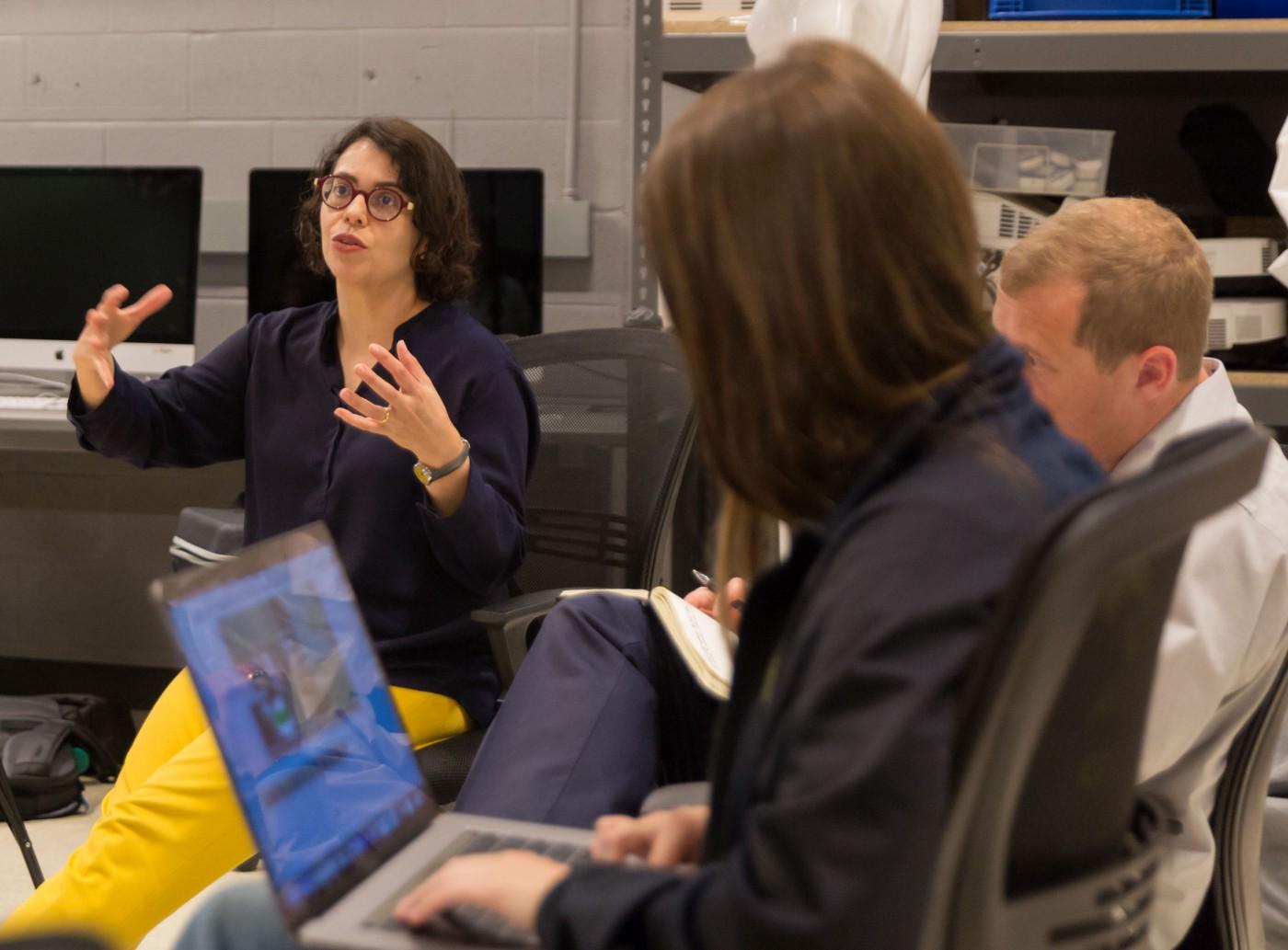
Fernanda Leite, associate professor in Civil, Architectural, and Environmental Engineering at The University of Texas at Austin, leads a VR-based project as part of the Planet Texas 2050 grand challenge. The Texas Futures Virtual Reality Experience will allow users to see, in 3D, what an urban environment in Texas might look like in 30 years. This simulation, which provides an immersive individual virtual reality experience delivered through a head-mounted display, will make users feel as though they’ve been tele‐transported into a future world. Once in the VR world, users will go through a series of interactive games that illustrate the impacts of population grown in our cities, such as access to water.
In its first two years, Planet Texas 2050 has brought together nearly 200 researchers spanning many fields across campus, including arts, architecture, archeology, city planning, computer science, engineering, geology, public health, and more. Each project has generated a wealth of research that is getting us closer to our goal of finding strategies to keep our state livable and resilient despite the threats of climate change and a rapidly growing population. However, we need to be able to communicate these findings in innovative ways to be truly effective and change people’s understanding of the impacts of climate change and population growth in our lives. As climate scientist Katharine Hayhoe has said: “The most important thing you can do to fight climate change: talk about it.”
Two of our teams are addressing this challenge by leveraging storytelling and technology to transform scientific results into experiences. We’re exploring how research and data can be integrated into engaging, entertaining, and educational storytelling experiences: one Planet Texas 2050 group is creating an immersive escape room set in the Gulf of Mexico during a hurricane, and the other — the team I lead — is designing virtual reality simulations that will help people see what their city could look like in 30 years, given a massively increased population and a changing climate. Our aim is to make scientific findings accessible and relevant to people and to encourage informed discussions that can help us make better decisions about our future.

Our Texas Futures Virtual Reality Experience team is made up of engineers, gaming experts, computer scientists, and artists. We’re using actual scientific data from Planet Texas 2050 research — climate projections, flood modeling, and population predictions — to produce a series of interactive games that:
- Show how natural and urban systems are interconnected: for example, users can experience what a heavy rainstorm might look like in a newly paved area as opposed to an urban center with more grass and permeable (absorbent) ground cover;
- Illustrate population growth in an urban area;
- Allow users to play with an interactive Texas map that shows how population growth affects our cities and natural resources. Once inside the VR headset, users will feel as if they’ve been tele‐transported via a time machine into a futuristic world.

We’re aiming for a fun and thoughtful experience for people, but we’re also hoping that giving people a futuristic virtual experience will inspire new ideas and conversations and — perhaps — make them see their current urban resources new ways.
“We need to be able to communicate these findings in innovative ways to be truly effective and change people’s understanding of the impacts of climate change and population growth in our lives.”
Climate change is upon us, and what we as a society do now, today, affects how we will live in 30 years. Unfortunately, though, our brains aren’t wired to respond to dry facts, especially when we’re used to living in bustling, growing cities with development happening all around us, continuously. We need new ways to engage our collective conscience, and virtual reality is one way to do that. We’re excited to see how our project will be received by participants and how we can learn from their feedback to improve the VR experience. Our virtual reality project gives people an interface with the future while giving us researchers a chance to learn more about how we humans process, interact with, and respond to information in the virtual environment.
Fernanda Leite and Doreen Lorenzo, Assistant Dean of the School of Design and Creative Technologies, will be joining Epic Games’ Marc Petit and David Kramer from Gensler in a Featured Session at SXSW in March. Demonstrations of the Texas Futures Virtual Reality Experience will take place in April at the Planet Texas 2050 Research Showcase on the UT campus.

